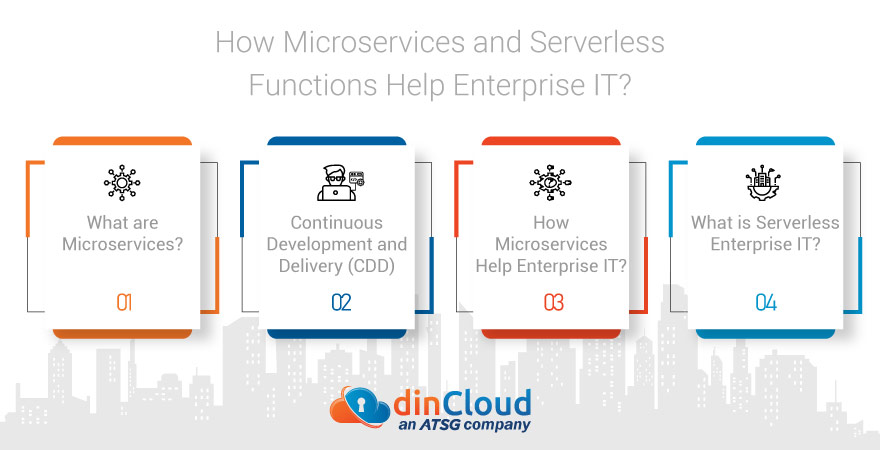The enterprise world is rapidly pivoting towards operational agility and flexibility. In fact, both agility and flexibility are quite interdependent upon each other. However, this concept of operational agility is now making its impact known far beyond just operations.
At the very core of enterprise operations are processes. When we dig deeper into organizational processes, we find that they are primarily a cohesive structure of many services that are constantly interacting with one another.
The more seamless and efficient this interaction among the various services, the more streamlined and agile will be enterprise operations. In today’s technology driven world, this can prove as a source of the much needed competitive edge in the respective industry.

Related: Cloud Computing, Cyber Security and Artificial Intelligence in 2022
What are Microservices?
Microservices is in fact a concept which is revolutionizing enterprise applications. It all starts from the concept as well as development phase. Then, there is the element of deploying these microservices to the best extent possible.
Instead of designing an enterprise application as a single, monolithic block, why not develop it in the form of smaller, granular pieces, called microservices. The smaller elements are then pieced together to deliver flexible and agileoperations.
Related: How will Desktop as a Service (DaaS) Grow in Year 2022?
Continuous Development and Delivery (CDD)
With microservices comes the concept of continuous development and delivery. This in turn has paved the way for truly agile DevOps, culminating in the form of much more efficient and streamlined application development processes.
Today, when most enterprise operations are being powered by digital technologies, the concept of DevOps has evolved into DevSecOps. As the name suggests, this approach enables enterprises to bake security into the app architecture from the word go.
So, enterprises are able to not only speed up the application development and implementation cycles, but are also able to achieve this while maintaining a robust cyber security posture.
Related: A Recap of Cloud Trends in Year 2021, and the Outlook for 2022
How Microservices Help Enterprise IT?
Enterprises are able to tap into a much more agile and flexible application architecture with the help of microservices. The foremost advantage of this approach towards app development is that its much easier to implement changes to processes.
Instead of modifying a monolithic block of application code to incorporate any operational or regulatory changes, only the microservices governing the process are isolated from the implemented environment, and the necessary changes are made.
Another area where microservices really help enterprise IT is the interchangeable use of microservices within different enterprise processes. This same flexibility and interoperability can be extended to other business units as well, if need be.
Related: Companies like BAE Systems Brace for the Hybrid Multicloud
What is Serverless Enterprise IT?
As the name suggests, serverless enterprise IT is all about delinking microservices from the physical hardware resources of the enterprise. As a natural consequence, enterprises will be relying more on abstraction technologies like Virtualization and Cloud Computing.
We can regard serverless IT operations as a key enabler for microservices to deliver as per their intended potential. The success of serverless enterprise operations lies in combining the elements of micro services and serverless computing.
Serverless computing otherwise minimizes the dependence of enterprise operations upon physical hardware resources that are much more prone to malfunction and failure. With serverless IT, enterprises are also able to achieve unrivaled scalability.
This in turn enables enterprises to leverage the same underlying hardware resources, through serverless operations, for a multitude of workloads. This approach also proves very helpful in the case of demand spikes for certain microservices.
Most of these demand spikes, in the normal course of events, are triggered by a temporary event. So, it is neither practical, nor feasible to scale physical IT hardware up or down on the fly, merely because of any event specific trigger.
Conclusion
In a nutshell, we can conclude that both microservices and serverless operations can really help streamline enterprise operations. However, the effectiveness of both can be amplified with the use of containerization techniques.
The concept of containers within enterprise IT operations has really evolved and matured over the years. So, as microservices and serverless operations catch up, containerization is a very effective and mature technology to leverage for enterprise operations.
Contact dinCloud, an ATSG company, for Cloud Hosted Virtual solutions and services for your enterprise needs.


